How Addressing the Root Cause of Pain Leads to Lasting Relief
November 6, 2025
9 min

Understanding Chronic Pain and the Importance of Root Causes
Definition and Prevalence of Chronic Pain
Chronic pain is generally defined as pain that lasts longer than three to six months, affecting about 20.9% of adults in the United States — roughly 51.6 million people. This condition can stem from various causes including arthritis, back problems, nerve issues, and other complex health conditions.
Symptoms and Common Manifestations
Symptoms vary widely but commonly include aching, burning, shooting, stiffness, or throbbing sensations. Many individuals also experience related emotional challenges such as anxiety, depression, fatigue, and disrupted sleep patterns, which further complicate the pain experience.
Complexity of Chronic Pain Mechanisms
Chronic pain is driven by intricate biological pathways involving the central nervous system, including the brain and spinal cord. The involvement of multiple mechanisms, such as neuropathic and musculoskeletal pathways, makes it difficult to isolate the exact source, requiring multifaceted treatment approaches.
Consequences of Untreated Chronic Pain
If left unmanaged, chronic pain can significantly impair daily activities and increase the risk of mental health issues like depression and suicidal thoughts. It may also contribute to substance misuse and cognitive decline. Early, comprehensive management is vital to improving quality of life and mitigating these serious outcomes.
The Complexity of Chronic Pain: Why a Root Cause Approach Matters

What Makes Chronic Pain Multifaceted?
Chronic pain is not just about lasting longer than three to six months; it's a complex condition involving multiple body systems. Pain pathways are complicated, with signals traveling through various routes, making it challenging to identify a single cause. This multifactorial nature means that chronic pain can stem from neuropathic, musculoskeletal, visceral, inflammatory sources, or central sensitization—the heightened sensitivity of the central nervous system.
How Does the Central Nervous System Influence Chronic Pain?
The brain and spinal cord play a crucial role in chronic pain, often becoming more sensitive and amplifying pain signals. This central nervous system involvement means that treatment must focus not only on the site of pain but also on how the body processes pain signals overall, explaining why some pain persists even without an obvious physical injury.
Why Is Pinpointing the Source of Pain So Challenging?
Because chronic pain can arise from various bodily systems and be influenced by many factors, isolating a single cause is often difficult. This complexity requires a thorough diagnostic process involving physical exams, imaging, and assessments of pain patterns to tailor effective treatment plans. A multidisciplinary approach to chronic pain treatment is often essential for managing this complexity.
How Do Psychological and Lifestyle Factors Affect Pain?
Stress, anxiety, depression, and lifestyle habits such as overexertion or insufficient activity can significantly worsen chronic pain. These factors not only magnify pain perception but also impact healing and recovery. Integrating psychological support, healthy lifestyle changes, and coping strategies forms a vital part of managing chronic pain effectively. Additionally, therapies like mindfulness meditation for pain control and breathing exercises for pain management can help reduce the impact of stress and improve pain outcomes.
Chiropractic Care: A Holistic Approach to Addressing Pain Origins

Role of chiropractic adjustments in spinal health
Chiropractic adjustments, also known as spinal manipulation, aim to improve the motion of the spine and enhance the body’s natural ability to move. These adjustments are particularly effective for conditions like low back pain, neck pain, and headaches that stem from spinal issues. By restoring proper spinal alignment, chiropractic care targets the root causes of musculoskeletal discomfort and promotes overall well-being.
Techniques used to restore joint function
Chiropractors use a range of hands-on techniques including spinal manipulation, joint mobilization, traction, myofascial release, and massage. Each treatment is customized to the patient’s specific needs. During a typical adjustment, controlled force is applied to targeted spinal joints to improve their motion and function.
Benefits in reducing inflammation and muscle spasms
Chiropractic care helps decrease muscle spasms and reduce inflammation around the joints, which are common contributors to chronic pain. This can lead to better joint mobility, less pain, and a greater range of motion, supporting long-term relief and increased physical function.
Integration with multidisciplinary pain management
At facilities like Western Reserve Hospital in Torrance, California, chiropractic care is delivered as part of a multidisciplinary approach to chronic pain treatment. It complements medical treatments and physical therapies, reinforcing lifestyle modifications such as movement and exercise. This integrated model supports holistic pain management, focusing on both symptoms and underlying causes for sustainable wellness.
Conservative Therapies that Retrain the Body and Mind

How can physical therapy and gentle exercises like yoga and tai chi help manage chronic pain?
Physical therapy plays a critical role in retraining the body to alleviate chronic pain. Through tailored, gentle movements, patients can gradually restore mobility and reduce muscle stiffness. Practices like gentle regular exercise such as gentle exercises like yoga and tai chi are especially beneficial as they combine low-impact exercise with mindful movement, enhancing flexibility and promoting relaxation without overexertion.
What benefits do breathing exercises and relaxation techniques offer?
Deep slow breathing techniques help reduce muscle tension and anxiety, giving the individual greater control over pain sensations. These techniques foster relaxation, lower stress levels, and can directly diminish the perception of pain by calming the nervous system. Additionally, breathing exercises for pain and practicing relaxation techniques can contribute to this effect.
How do mindfulness meditation and psychological therapies contribute to pain management?
Mindfulness meditation for pain control encourages focus on the present moment, which can reduce the emotional amplification of chronic pain. Psychological therapies for pain, including Cognitive Behavioral Therapy (CBT) for chronic pain, address associated mental health challenges such as depression and anxiety, further improving a patient’s ability to cope with persistent pain. Other related techniques include talking therapies with psychologists, hypnotherapy for pain management, and distraction techniques with hobbies.
Why is pacing oneself and setting realistic goals important?
Avoiding both overexertion and underexertion is vital for managing chronic pain. By pacing and setting realistic goals, individuals prevent flare-ups caused by strain while maintaining consistent progress in their treatment plan. This balanced approach optimizes physical function and emotional well-being.
Incorporating these conservative and holistic therapies fosters a comprehensive strategy that treats both the body and mind, essential for effective chronic pain management strategies. For a full multidisciplinary approach to chronic pain treatment, combining physical, psychological, and lifestyle therapies provides the best results.
Lifestyle Modifications: Supporting Long-Term Pain Relief

Importance of regular sleep and healthy sleep habits
Good sleep habits play a crucial role in managing chronic pain effectively. Establishing regular sleep routines, such as consistent bedtimes and reserving the bed only for sleep and intimacy, helps improve sleep quality. Poor sleep can worsen pain sensitivity and contribute to fatigue, anxiety, and mood swings, which can all magnify pain.
Avoiding substances like smoking and alcohol
Avoiding smoking and excessive alcohol consumption is important for pain management. These substances can interfere with the healing process and potentially damage nerves, exacerbating chronic pain symptoms over time. Lifestyle changes that reduce or eliminate these substances support the body’s ability to recover and maintain proper nerve function (Tips for managing chronic pain, 10 ways to ease pain).
Engaging in enjoyable activities to release endorphins
Participating in activities that bring joy and satisfaction helps release endorphins, the body’s natural painkillers. Activities like walking, dancing, gardening, or hobbies provide distraction from pain and promote a sense of well-being (distraction techniques with hobbies, Releasing endorphins through enjoyable activities, role of endorphins in pain relief). This natural pain relief complements other therapies and enhances overall quality of life.
Maintaining social support and emotional well-being
Chronic pain often leads to feelings of isolation and emotional distress. Maintaining strong social connections with family and friends provides invaluable emotional support. This support system helps reduce depression and anxiety, encourages adherence to treatment plans, and improves the ability to cope with pain’s challenges. Programs, support groups, and talking therapies, emotional support for chronic pain patients also contribute to maintaining emotional health in a chronic pain journey.
Avoiding Overreliance on Medications and Surgery

How should medications be used in managing chronic pain?
Medications can be part of a chronic pain management plan, but they should be used cautiously to minimize side effects and avoid dependence. Non-opioid anti-inflammatory drugs, muscle relaxants, nerve pain medications, and antidepressants are typically preferred. Such medications aim to relieve symptoms without the risks associated with long-term opioid use.
What is the role of injections in pain management?
Injection-based treatments, such as trigger point injections and epidural steroids, serve as complementary therapies. They can provide temporary relief from pain and inflammation but are generally used alongside other therapies like physical therapy and lifestyle modifications rather than as standalone solutions.
When is surgery considered for chronic pain, and what are its limitations?
Surgery is usually reserved as a last resort for patients with neurological deficits or significant structural abnormalities confirmed through imaging. It does not guarantee complete pain relief and carries inherent risks. Because of these factors, surgery is only pursued when conservative measures fail to provide adequate benefit. For more details, see consulting spine specialists in Torrance CA.
Why prioritize non-pharmacologic treatments?
Non-drug treatments—including chiropractic care, physical therapy, exercise, psychological therapies, and lifestyle modifications—play a critical role in managing chronic pain. These approaches often address underlying causes, improve function, and support long-term wellness without the adverse effects linked to medications or invasive procedures. Emphasizing these methods helps foster a multidisciplinary approach to chronic pain treatment and patient-centered care.
Empowering Patients through Education and Self-Management

Educational resources and self-management courses
Managing chronic pain effectively involves more than medication; patient education plays a crucial role. Resources like the Pain Toolkit educational resources and materials from British Pain Society publications offer practical guidance for living with long-term pain. Self-management courses NHS, often provided through healthcare systems such as the NHS, teach vital skills that help patients gain confidence and reduce dependence on medications by empowering them to take an active role in their pain care.
Use of distraction and sharing experiences for emotional support
Engaging in hobbies and activities that capture attention can serve as powerful distraction techniques with hobbies, shifting focus away from pain sensations. Furthermore, sharing stories through sharing stories via helplines or emotional support through videos creates a sense of community and reduces feelings of isolation, which is essential because mental health’s impact on chronic pain often exacerbates pain experiences.
Coordination of therapy and medical management
Managing chronic pain successfully requires the coordination of various therapies including physical therapy for chronic pain, psychological interventions such as Cognitive Behavioral Therapy (CBT) for chronic pain, and medical treatments. This integrated approach addresses pain from multiple angles, including physical, emotional, and neurological factors, enhancing overall outcomes.
Benefits of a team approach to chronic pain
A multidisciplinary approach to chronic pain treatment, combining medical practitioners, therapists, chiropractors, and support systems, ensures comprehensive care tailored to each patient’s unique needs. This collaboration improves pain management by addressing root causes of chronic pain, promoting movement therapy for pain relief, supporting mental health’s impact on chronic pain, and retaining a patient-centered focus to improve quality of life.
A Holistic, Root-Cause Focused Path to Lasting Pain Relief
Holistic Approaches Targeting Underlying Causes
Chronic pain is complex, often involving multiple pathways in the nervous system and musculoskeletal structure. Effective relief demands recognizing and addressing these root causes rather than just masking symptoms. Chiropractic care exemplifies this approach by focusing on spinal health to improve overall body function. Techniques like spinal manipulation, joint mobilization, and myofascial release work to reduce inflammation, muscle spasms, and restore proper joint alignment, directly targeting pain sources.
Combining Therapies and Lifestyle Changes
Managing chronic pain effectively requires a multidisciplinary approach that blends medical, physical, and psychological care. Incorporating physical therapy, gentle exercise, breathing exercises, and mindfulness meditation helps retrain the body and calm pain pathways. Lifestyle modifications such as pacing activities, quitting smoking, ensuring quality sleep, and engaging in enjoyable activities also play a vital role in sustaining long-term relief and enhancing well-being.
Timely, Multidisciplinary Care
Seeking early and broad-based care is crucial to prevent chronic pain from worsening or causing emotional strain. Integrating chiropractic treatments with conventional medicine, psychological therapies, and patient education creates a supportive framework empowering patients. This convergence of therapies helps manage pain more effectively, lessen dependence on medications, and improve functional capacity.
Inspiring Hope and Better Quality of Life
Though chronic pain has no simple cure, comprehensive management strategies dramatically improve quality of life. They reduce pain intensity, ease associated stress and mood disorders, and enable patients to regain control over daily activities. By addressing pain holistically and encouraging individual empowerment, patients can achieve sustained relief and a healthier, more active life.
Recent articles

Inspiring Patient Testimonials Highlighting Chiropractic Success

Chiropractic Care: A Natural Solution for Back Pain Relief

Amazing Patient Success Stories in Chiropractic Wellness

Combining Physiotherapy and Chiropractic for Optimal Healing

Spinal Decompression Therapy: A Breakthrough for Sciatica Sufferers

5 Holistic Treatments That Complement Chiropractic Care

How Physiotherapy Supports and Enhances Chiropractic Treatment

Root Cause Versus Symptom Treatment: Making the Right Choice

7 Essential Things to Know Before Choosing Your Chiropractor

Why Addressing Root Causes of Pain Matters More Than Just Symptoms

Nutritional Counseling Strategies to Boost Your Overall Wellness

How Spinal Decompression Therapy Alleviates Sciatic Nerve Pain

Long-Term Pain Relief Through Targeted Corrective Exercises

10 Benefits of Integrating Physiotherapy with Chiropractic Treatments

Corrective Exercises That Help Prevent Recurring Pain

8 Corrective Exercises Proven for Lasting Pain Relief

Lifestyle Habits for Maintaining a Healthy Spine

What You Will Experience at Your Initial Chiropractic Visit

What Happens at Your First Visit to a Chiropractor?
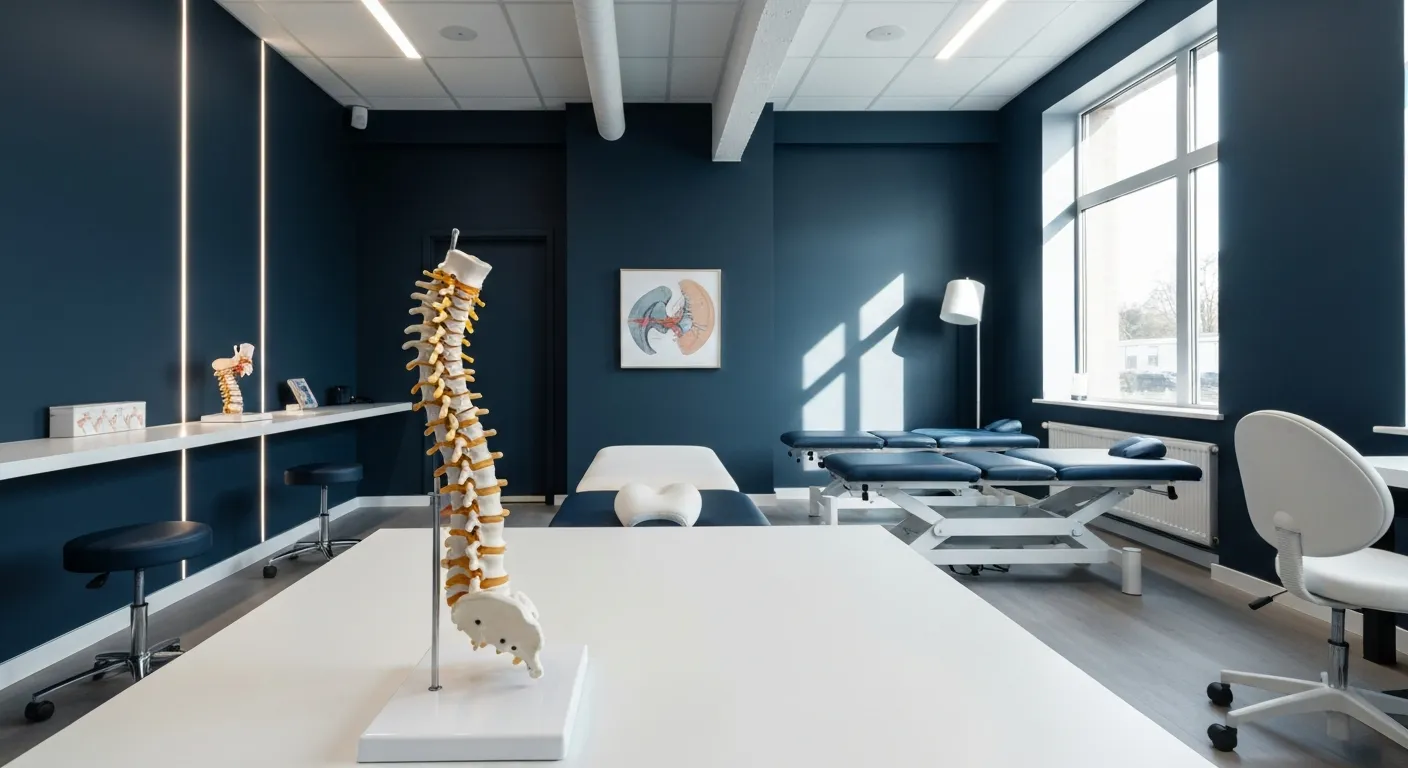
Focusing on Root Cause Analysis for Effective Pain Relief
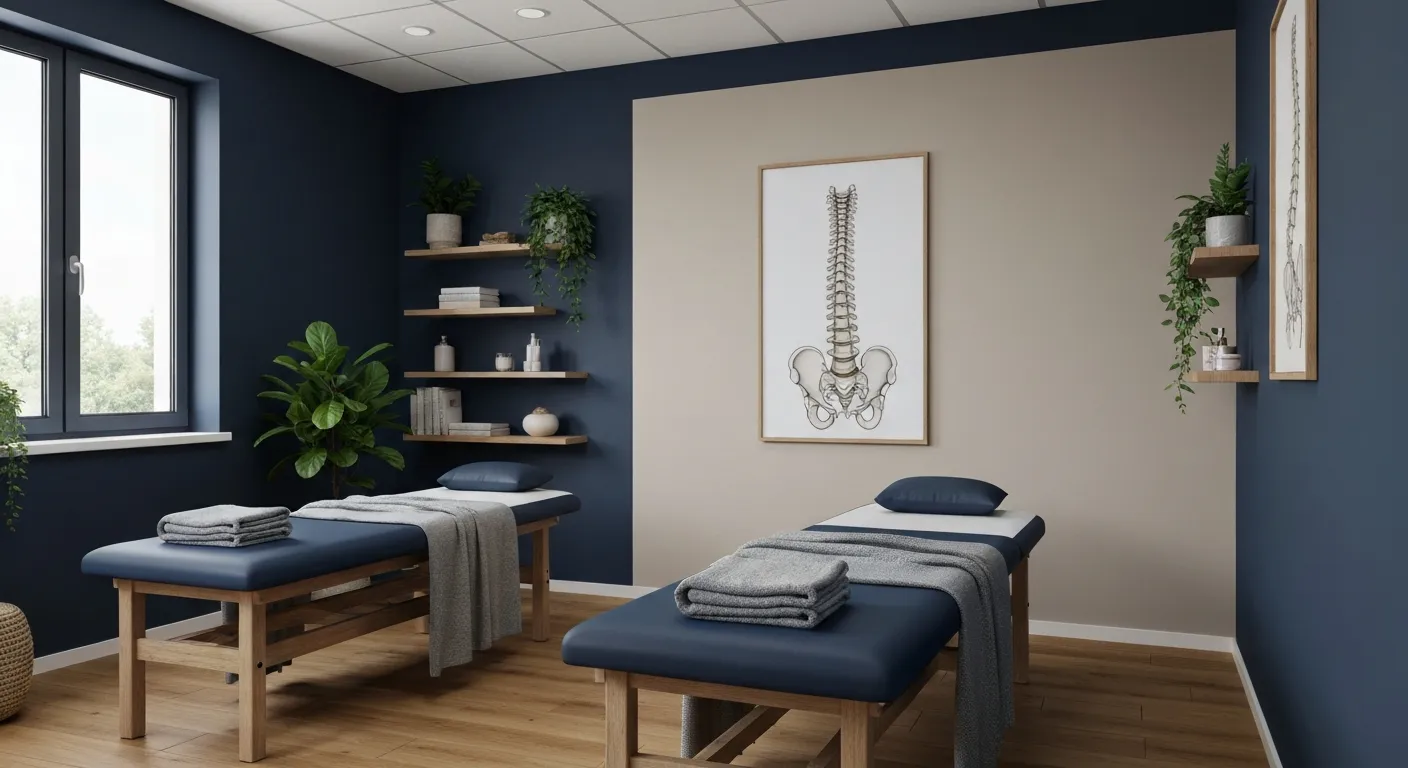
Tips for Lifestyle Changes to Support Spinal Health

Tips for Lifestyle Changes to Support Spinal Health

Holistic Treatment Plans: Alternatives to Surgery for Chronic Pain

Enhance Wellness Through Personalized Nutritional Counseling

Non-Invasive Pain Relief: Exploring Holistic Treatment Alternatives
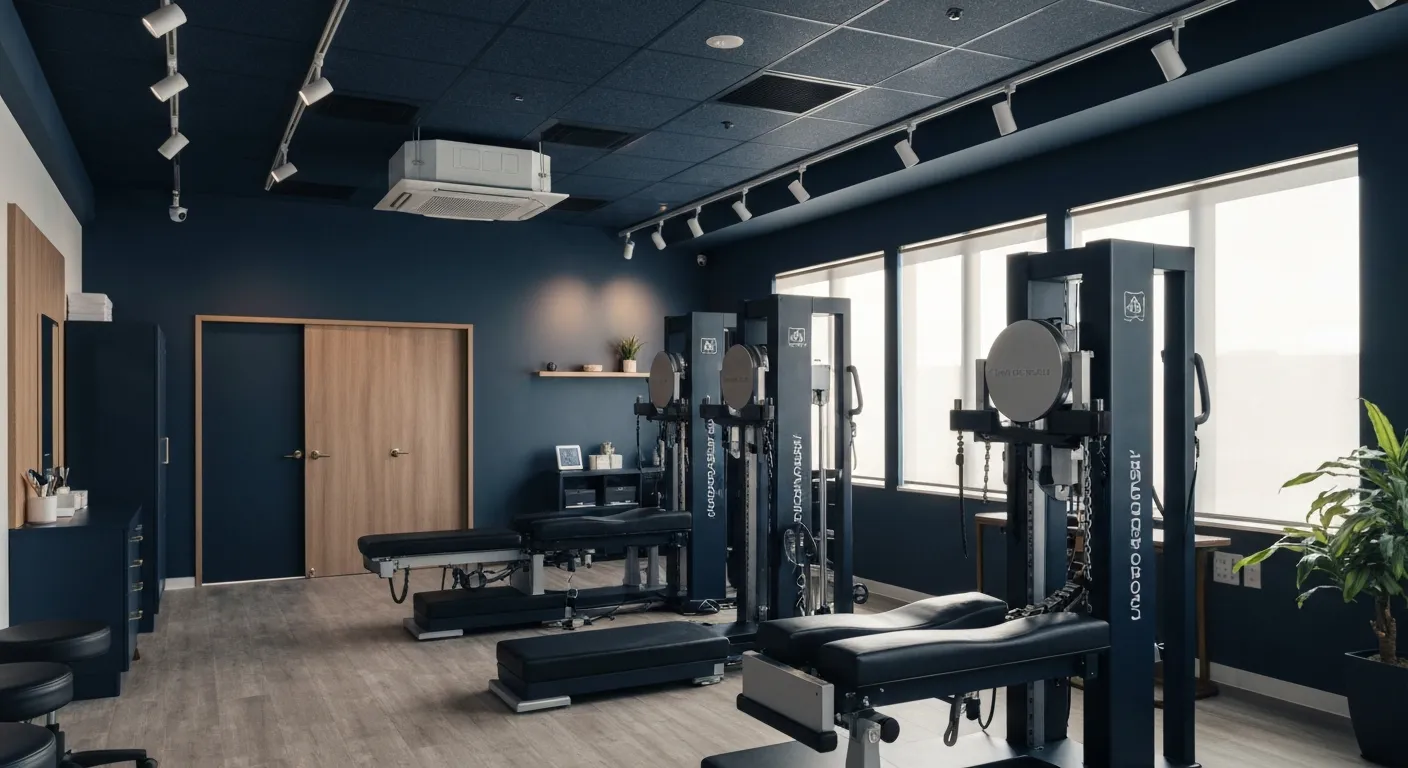
Sciatica Relief Through Targeted Spinal Decompression

Integrating Physiotherapy with Chiropractic Treatments for Better Results

Testimonials That Demonstrate the Benefits of Chiropractic Care

The Power of Corrective Exercises in Pain Management

A Step-by-Step Guide to Your Initial Chiropractic Consultation

9 Nutritional Tips to Enhance Your Chiropractic Wellness Journey

Patient Experiences: How Chiropractic Care Changed Their Lives

Lifestyle Recommendations to Keep Your Spine in Top Shape

Effective Corrective Exercises for Long-Term Pain Relief

Back Pain Benefits: What Chiropractic Care Can Do for You
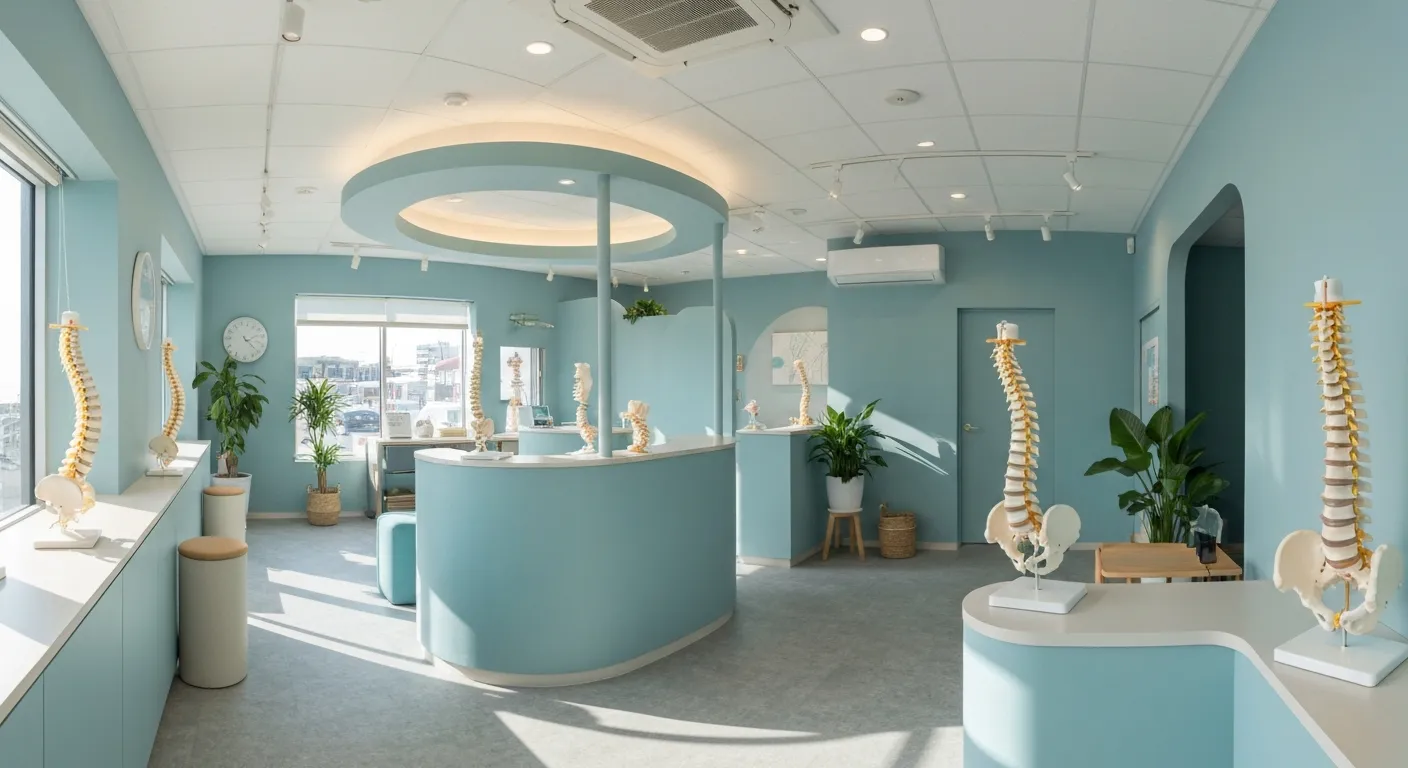
Spinal Decompression Techniques for Effective Sciatica Relief

Top Nutritional Counseling Tips for Enhanced Wellness

6 Lifestyle Habits That Boost Spine Health Daily

Discover Holistic and Non-Surgical Pain Relief Solutions

Exploring Holistic and Non-Surgical Treatment Options for Pain
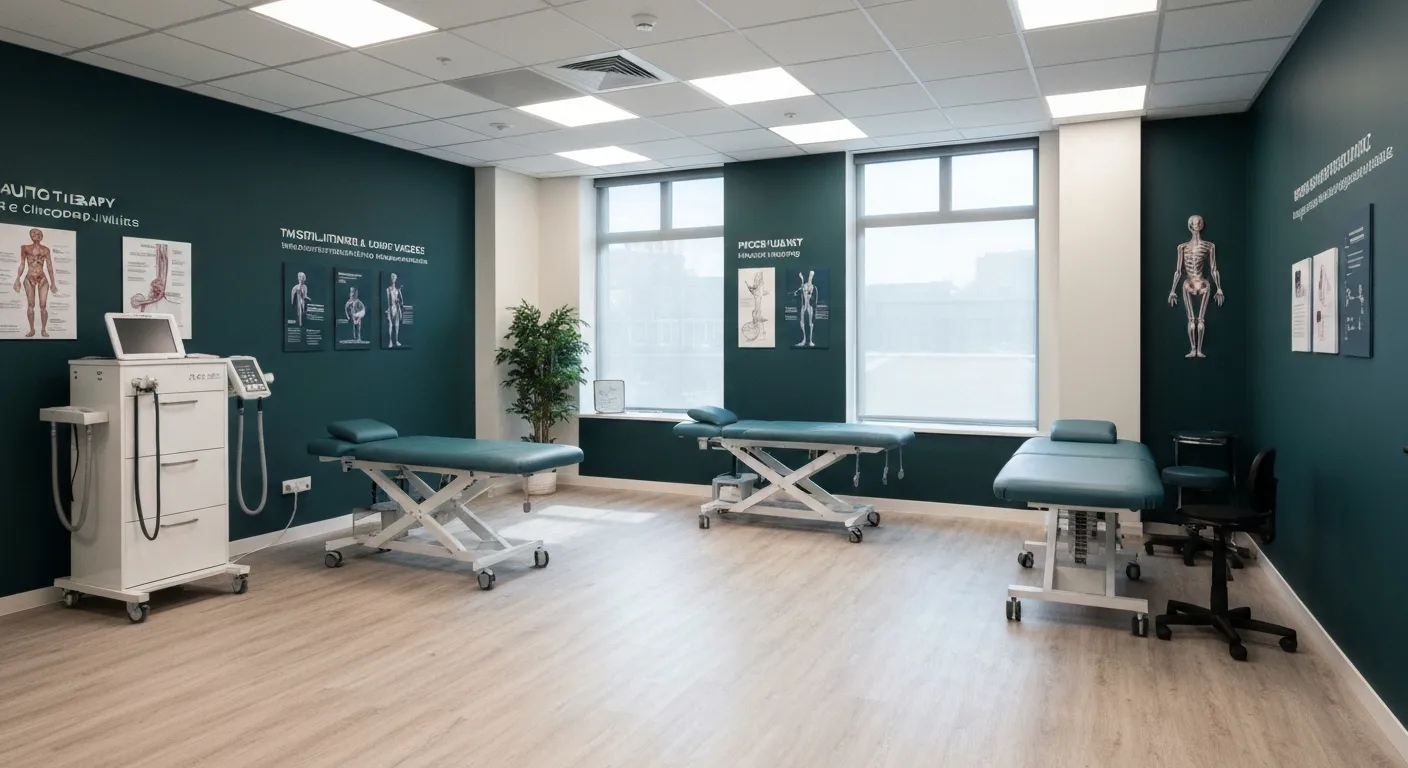
The Role of Physiotherapy in Enhancing Chiropractic Care Outcomes

Complementing Chiropractic Care with Physiotherapy: What You Need to Know

What to Expect During Your First Chiropractic Visit

Simple Lifestyle Adjustments to Maintain a Healthy Spine

Personalized Nutritional Counseling for Improved Health Outcomes

Exploring Non-Surgical Treatments for Spine-Related Conditions
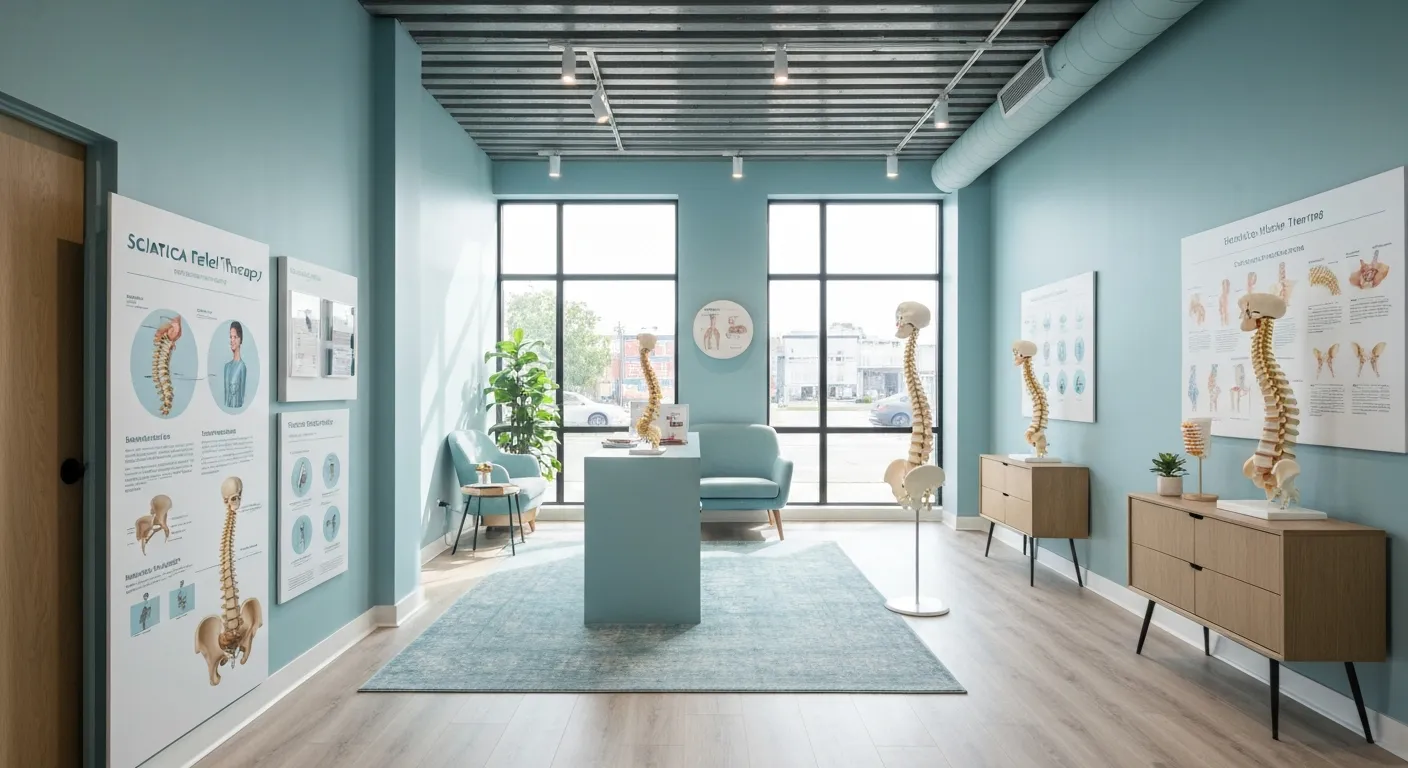
An Introduction to Spinal Decompression for Sciatica Patients

Transformative Success Stories: Patient Experiences with Chiropractic Treatments

Why Chiropractic Care Is Essential for Back Pain Relief

Addressing Underlying Causes Versus Symptom Management in Pain Care

The Role of Nutrition in Enhancing Chiropractic Treatment Effectiveness
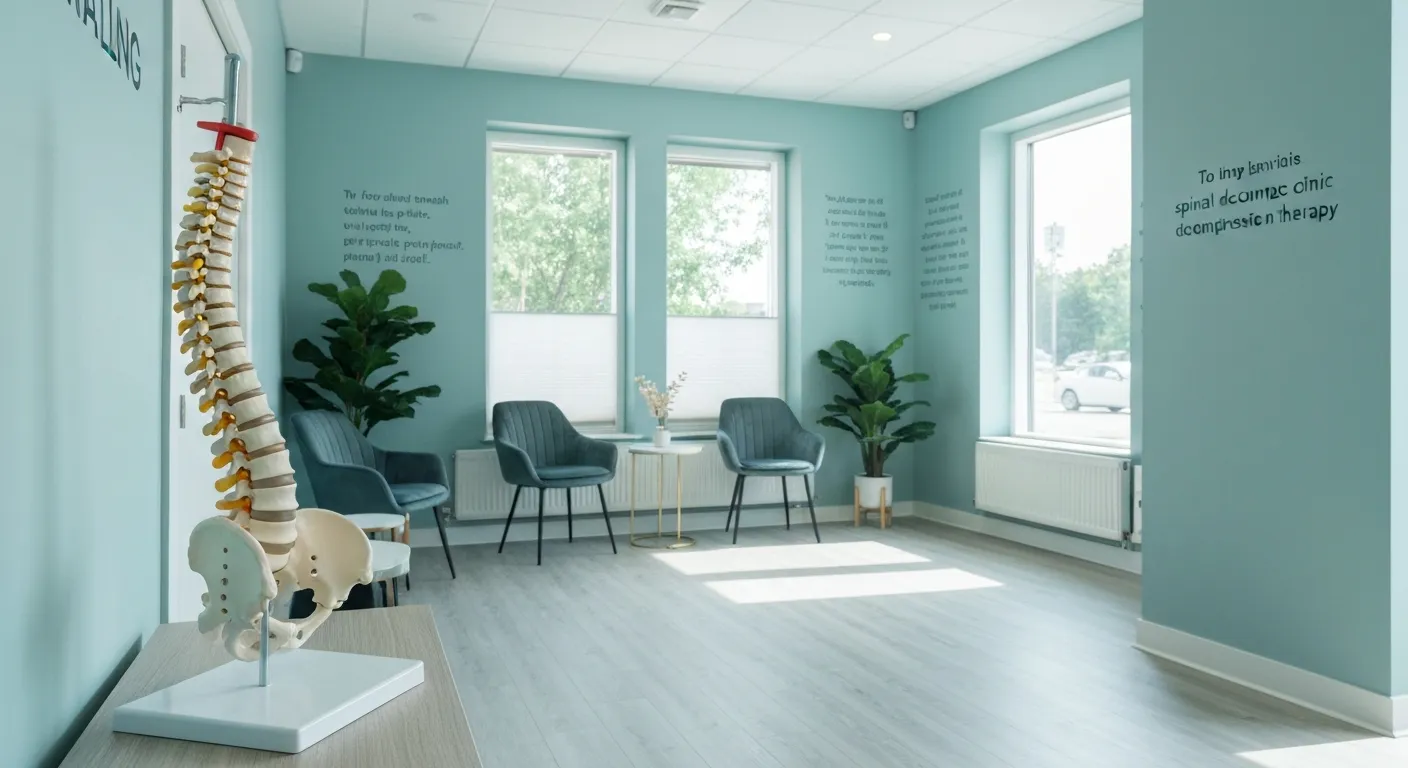
Sciatica Treatment Options: Is Spinal Decompression Right for You?

Lifestyle Tips to Maintain a Healthy Spine and Prevent Back Issues

The Synergy Between Physiotherapy and Chiropractic Treatments

What Happens During Your Initial Chiropractic Consultation

Effective Corrective Exercises for Sustainable Pain Management

Taking a Root Cause Approach to Chronic Pain Management

Holistic Pain Management Techniques Without Surgery

How Patient Success Stories Validate Chiropractic Care Benefits

Spinal Decompression: Innovative Treatment for Sciatic Nerve Pain

Spinal Decompression Therapy: A Non-Invasive Approach to Sciatica Relief

Exploring Holistic Approaches Beyond Surgery for Pain Relief

Practical Lifestyle Advice to Support a Healthy Spine Every Day

Corrective Exercise Routines Designed for Long-Term Pain Prevention

Real Patient Stories: Overcoming Chronic Pain with Chiropractic Care

Lifestyle Changes That Promote a Healthy Spine and Prevent Injury

How Addressing the Root Cause of Pain Leads to Lasting Relief

Non-Surgical Holistic Therapies to Manage Chronic Pain Effectively

Nutritional Counseling's Impact on Physical Health and Healing

Benefits of Regular Chiropractic Care for a Stronger Back

Your First Chiropractic Visit: What to Expect and How to Prepare

Patient Experiences: How Chiropractic Care Transformed Their Lives

Exploring Holistic, Non-Surgical Options for Pain Management

Combining Physiotherapy with Chiropractic Treatments for Enhanced Recovery

Holistic Treatments That Offer Alternatives to Surgery for Pain Relief

Corrective Exercise Strategies for Long-Term Spine Health

How Physiotherapy Complements Chiropractic Adjustments for Better Outcomes

First-Time Chiropractic Visitors: What You Should Know

Understanding the Importance of Treating Pain at Its Source

Adopting Lifestyle Changes to Support Your Spine's Wellness

Utilizing Physiotherapy to Enhance Chiropractic Treatment Outcomes

The Key Advantages of Chiropractic Care for Back Pain Sufferers

Why Focusing on Root Causes Improves Pain Treatment Success

Corrective Exercises That Promote Lasting Pain Relief and Mobility

Sciatica Relief Through Targeted Spinal Decompression Techniques

Preparing for Your First Chiropractic Appointment with Confidence

Healthy Lifestyle Habits for Maintaining Spinal Alignment

Success Stories Highlighting Chiropractic's Role in Pain Recovery

Top Benefits of Chiropractic Care for Chronic Back Pain

Nutrition Tips to Boost Your Overall Wellness and Recovery

How Chiropractic Care Alleviates Back Pain Naturally

How Nutritional Counseling Supports Overall Wellness and Spine Health

Step-by-Step Guide to Your First Visit with a Chiropractor

Using Nutrition to Support Chiropractic and Overall Wellness

Integrating Physiotherapy in Your Chiropractic Healing Journey

Integrating Physiotherapy in Your Chiropractic Healing Journey

How Physiotherapy Complements Chiropractic Adjustments for Faster Healing

Lifestyle Tips for Maintaining a Healthy Spine and Preventing Back Pain

Heartwarming Patient Testimonials Highlighting Chiropractic Success

